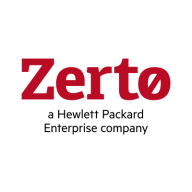


Zerto and CloudSphere are competing products in the realms of disaster recovery and cloud management, respectively. Zerto has an edge in robust disaster recovery solutions, while CloudSphere is preferred for its comprehensive cloud management capabilities, attracting organizations prioritizing feature depth.
Features: Zerto's key features include continuous data protection, automated workflows, and a seamless VMware integration. It allows for minimal downtime and advanced data recovery methods. CloudSphere excels in cloud governance, security management, and providing detailed IT environment insights. Its capabilities support optimal cloud oversight and resource allocation.
Room for Improvement: Zerto could benefit from enhanced long-term data retention and broader cloud platform support. Users have noted some limitations in automation for non-VMware environments and complex configuration needs for certain setups. CloudSphere might improve its scalability for very large enterprises and further integrate advanced security features. Simplifying its user interface could also enhance user experience, especially for those new to cloud management.
Ease of Deployment and Customer Service: Zerto offers a straightforward deployment model with excellent customer support, simplifying the installation process. CloudSphere provides flexible deployment adaptable to various IT infrastructures, ensuring seamless integration. Its emphasis lies in adaptation and compatibility across multiple environments.
Pricing and ROI: Zerto entails a higher initial cost, but its effective disaster recovery features promise substantial ROI. CloudSphere provides competitive pricing for its cloud management tools, often resulting in higher ROI through efficient resource utilization. This reflects the contrast between Zerto's specialized recovery investments and CloudSphere's balanced approach for broader management benefits.



IBM Turbonomic offers automation, planning, and right-sizing recommendations to streamline resource management, improve efficiencies, and optimize costs across virtualized environments and cloud platforms.
IBM Turbonomic is valued for its capability to optimize resource allocation and monitor virtual environments efficiently. It facilitates automated decision-making in VM sizing, load balancing, and cost optimization for both on-premises and cloud deployments. Users can leverage insights for workload placement, ensure peak performance assurance, and effectively right-size across VMware and Azure. The ongoing transition to HTML5 aims to improve visual and navigational ease, while expanded reporting features are anticipated. Opportunities for improved training, documentation, and integrations enhance platform usability and functionality.
What Are the Key Features?In finance, IBM Turbonomic aids in maintaining platform efficiency during market fluctuations. Healthcare organizations leverage its capability for resource optimization during high-demand periods to enhance patient care support. Retailers use it for planning in peak seasons, ensuring resources align with fluctuating demand to maintain performance continuity.
CloudSphere is an intelligent cloud management platform that enables organizations to plan, optimize, secure, and scale their cloud adoption. The platform has three solutions to help organizations manage dynamic, multi-cloud environments, including cloud migration planning, cloud cost management, and cloud security posture management. By using application intelligence (AI), the platform is able to discover and collect all of the data points that collectively define an application across on-premises, hybrid, and cloud environments. Because the solution is very scalable, it can accommodate companies of all sizes.
The CloudSphere solution is ideal for:
CloudSphere Product Highlights
CloudSphere Features
CloudSphere has many valuable key features. Some of the most useful ones include:
CloudSphere Benefits
There are many benefits to implementing CloudSphere. Some of the biggest advantages the solution offers include:
Zerto is used for disaster recovery, business continuity, data migration, and ransomware recovery, providing continuous data protection and near real-time replication. Valued for ease of use, efficient failover processes, and versatile integration, it enhances organizational efficiency, reduces errors, and boosts productivity.
We monitor all Cloud Migration reviews to prevent fraudulent reviews and keep review quality high. We do not post reviews by company employees or direct competitors. We validate each review for authenticity via cross-reference with LinkedIn, and personal follow-up with the reviewer when necessary.